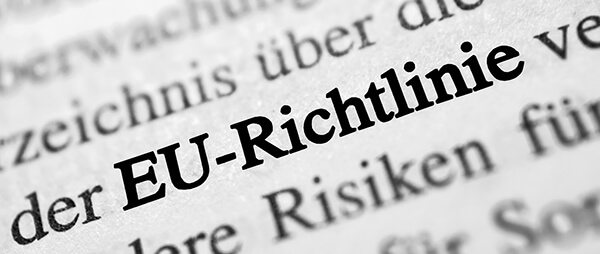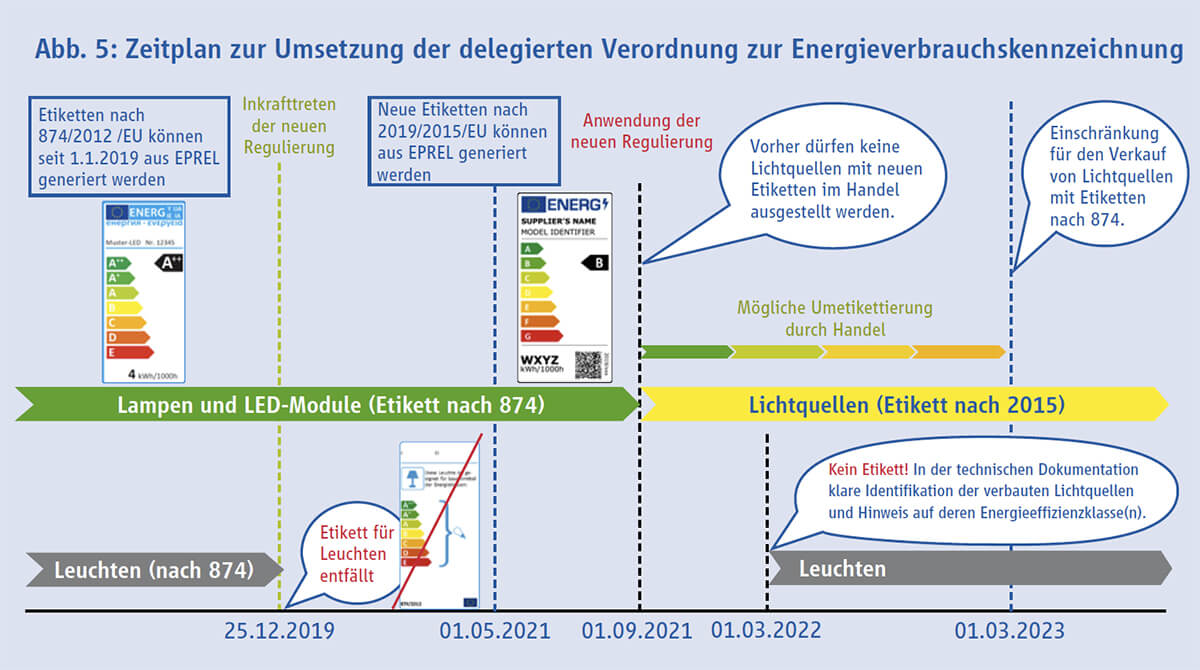
Background
To improve the climate footprint and further reduce the emission of climate-damaging emissions, the EU has issued new regulations which come into force specifically for light sources and operating devices from 01 September 2021.
.
The new EU 2019/2020 regulation aims to improve the environmental performance of products with relevant energy consumption. Among other things, it also applies to LED light sources and control gear and presents the lighting industry with the challenge of further improving the energy efficiency of its products.
The EU 2019/2015 regulation on the labeling of energy consumption pursues the goal of providing the end customer with all the necessary information to form a uniform and easily comprehensible picture of energy efficiency and to influence the purchase decision accordingly.
We at Neumüller Elektronik, as specialists in LED technology, will support you in the conversion of existing solutions and the development of new products to comply with the directive.
Services
- Adaptation of existing solutions according to the applicable guidelines
- Spectral measurement of relevant parameters incl. measurement protocol
- Photometric measurement of relevant parameters incl. measurement protocol
- Labeling of products in compliance with directives
- Provision of all necessary technical data
- Directive-compliant new development and production of customer-specific solutions
- Consulting from the idea to the solution
- Development according to standards
- Production
EU 2019/2020
The new Regulation 2019/2020/EU, supplemented by Regulation 2021/341/EU, sets out the requirements for light sources and operating devices under Directive 2009/125/EG of the European Parliament and of the Council. This regulation distinguishes between light sources, separate operating devices and surrounding products. The requirements apply regardless of whether a light source or separate operating device is placed on the market as part of a surrounding product.
A light source is defined as follows:
"Light source" means an electrically operated product intended to emit light having all of the following optical characteristics:
(a) chromaticity coordinates x and y in the range
0,270 < x < 0,530 and
2,3172 x2 + 2,3653 x - 0,2199 < y < - 2,3172 x2 + 2,3653 x - 0,1595;
(b) luminous flux < 500 lm per mm2 of projected light-emitting surface as defined in Annex I to the Regulation.
c) Luminous flux between 60 and 82 000 lm;
d) color rendering index (CRI) > 0;
in addition, the product must use inorganic light-emitting diodes (LEDs) or organic light-emitting diodes (OLEDs), or a combination thereof, as the lighting technology.
Not considered light sources:
a) LED dies and LED chips;
b) LED packages;
c) products containing (a) light source(s) that can be removed for inspection;
d) Light emitting parts of a light source that cannot be removed for inspection as a light source;
"separate operating device" means an operating device that is not physically integrated with a light source and is marketed as a separate product or as part of a surrounding product.
"Surrounding product" means a product that contains one or more light sources or separate operating devices, or both. Examples of surrounding products include luminaires that can be disassembled for separate inspection of the contained light source(s), and household appliances or furniture (shelves, mirrors, display cases) that contain one or more light sources. If a surrounding product cannot be disassembled for inspection of the light source and separate operating device, the surrounding product as a whole is considered a light source.
EU 2019/2015
This regulation establishes requirements for the labeling of light sources with or without integrated control gear and for the provision of additional product information on these light sources. The requirements also apply to light sources placed on the market in a surrounding product.
Different requirements apply to surrounding products. Among other things, it eliminates the requirement for suppliers to provide labels to distributors as of this date. Likewise, the obligation for retailers to display the luminaire's energy label visibly to end users, among other things, will be eliminated as of that date.
From March 1, 2022, suppliers of luminaires must comply with the following when placing light sources in luminaires on the market:
The light source must be clearly identifiable in the technical documentation and be located in the product database.
- The technical documentation must specify the energy efficiency class(es) of the included light source(s).
- The user manual or instruction manual must include the sentence: "This product contains (a) light source(s) of energy efficiency class(es) ."
Light sources that are marketed as a stand-alone product in a package must be supplied with the new energy label on the package. The labels and product data sheets must be made available to retailers in electronic form and, if specifically requested, in printed form.
Example of the new energy label:

Schedule:

1 Source: ZVEI
Light sources, whether placed on the market as part of a surrounding product or individually, must be registered in the
EU product database "EPREL" (European Product Registry for Energy Labelling). Consumers and market surveillance authorities have access to this database to varying degrees. The parameters of the product data sheet and the content of the technical documentation for all light sources placed on the market must be entered into this product database. Since January 1, 2019, there has been an obligation to enter information on light sources into an EU product database, but until now many light sources that are marketed as part of a luminaire and are not intended for replacement by the end user have been exempt from this obligation. The new Energy Labelling Regulation no longer has these exemptions, so all light sources within the scope of the regulation must be entered into the product database using much more comprehensive information, including measured data.
The new Energy Labelling Regulation requires that all light sources within the scope of the regulation must be entered into the product database using much more comprehensive information, including measured data.
In this database, the new energy labels including the QR code can be created automatically. Via the QR code, the consumer has access to the public part of the database entry for the light source in question and can clearly identify the technical parameters as well as the manufacturer.
For more information, we recommend the summary from ZVEI:.
Ecode design, energy labelling, EPREL database - Lighting requirements, version 2 - zvei.org.
























